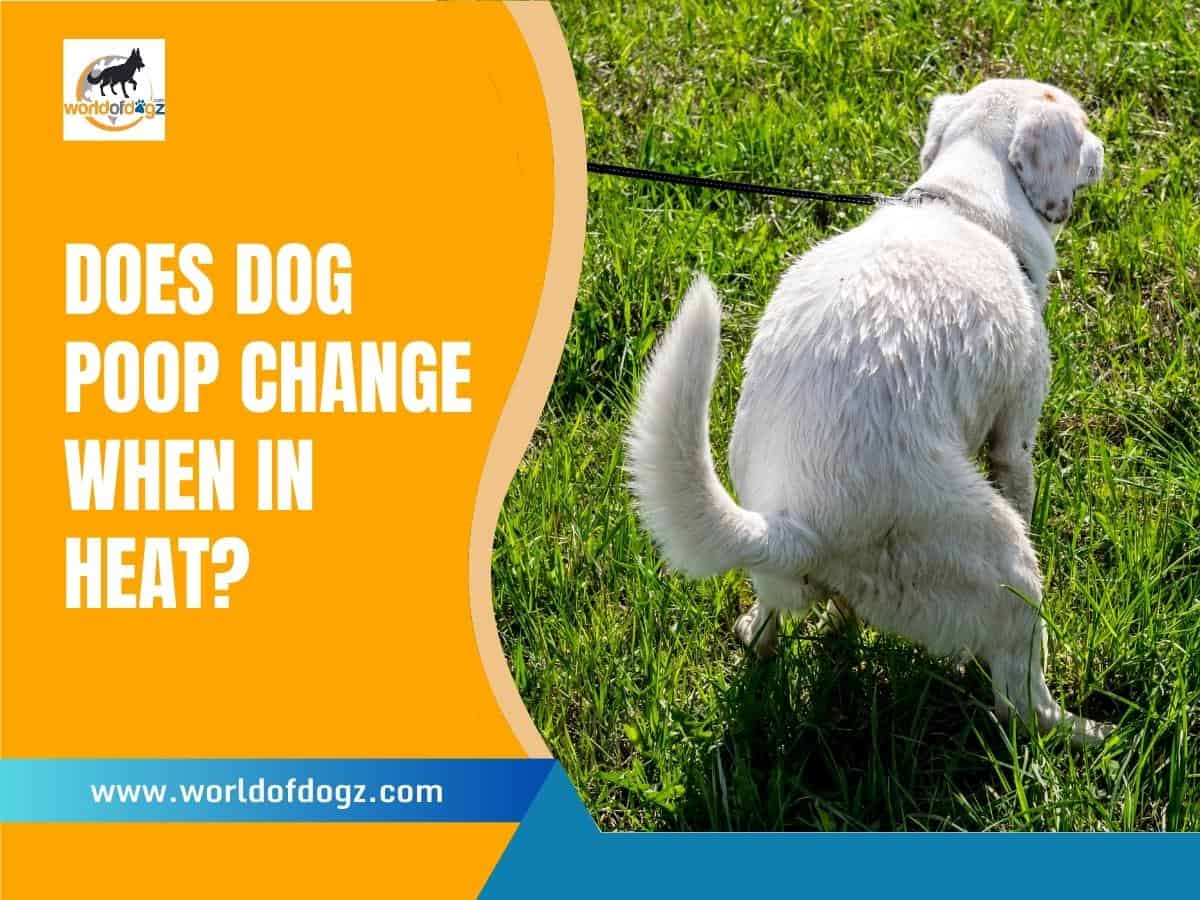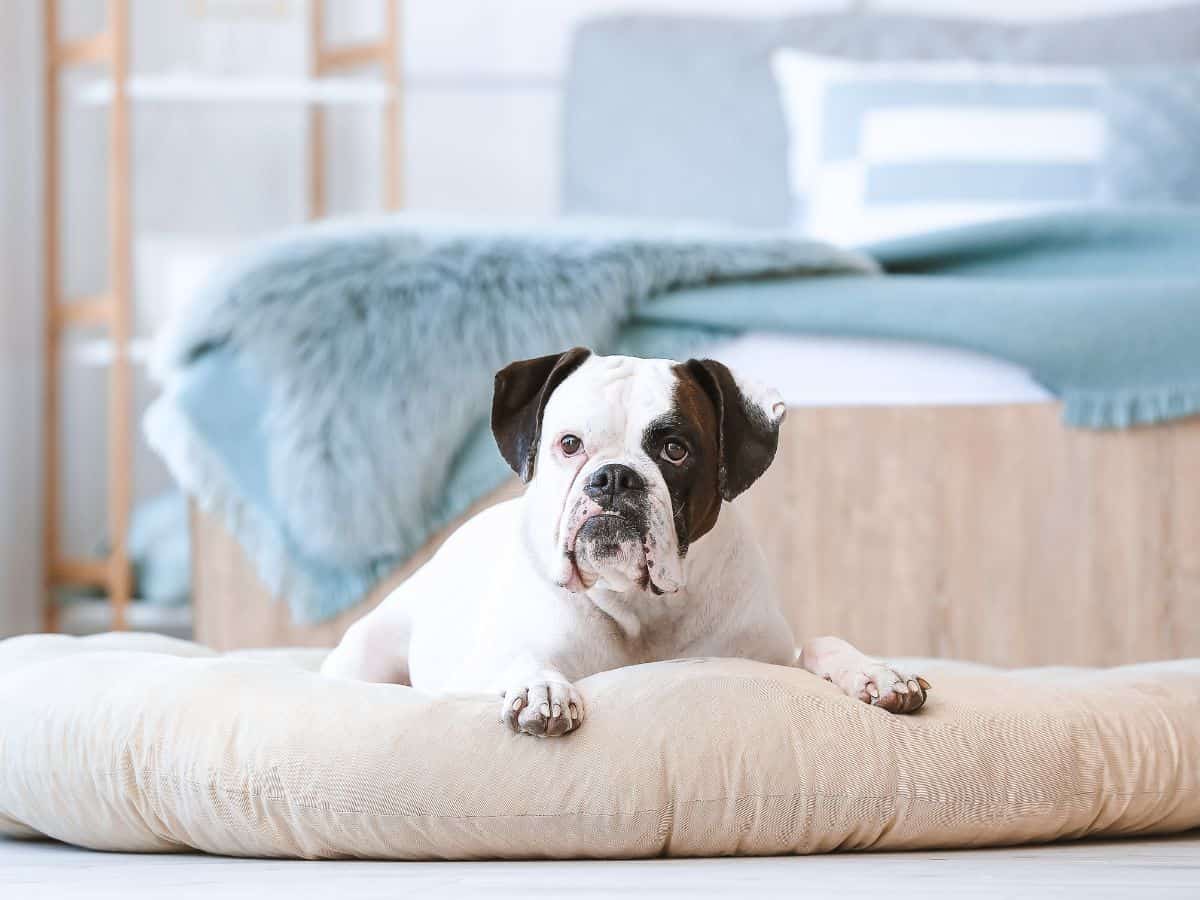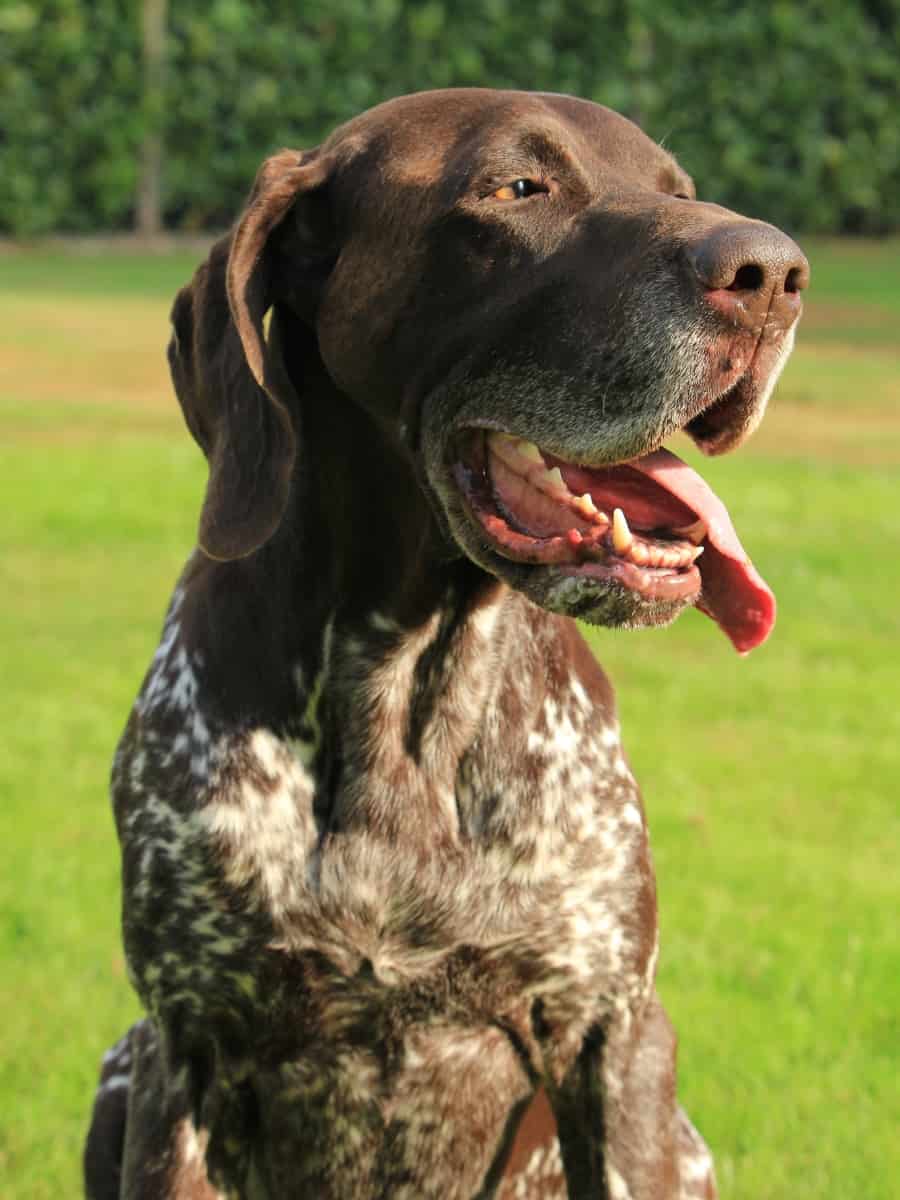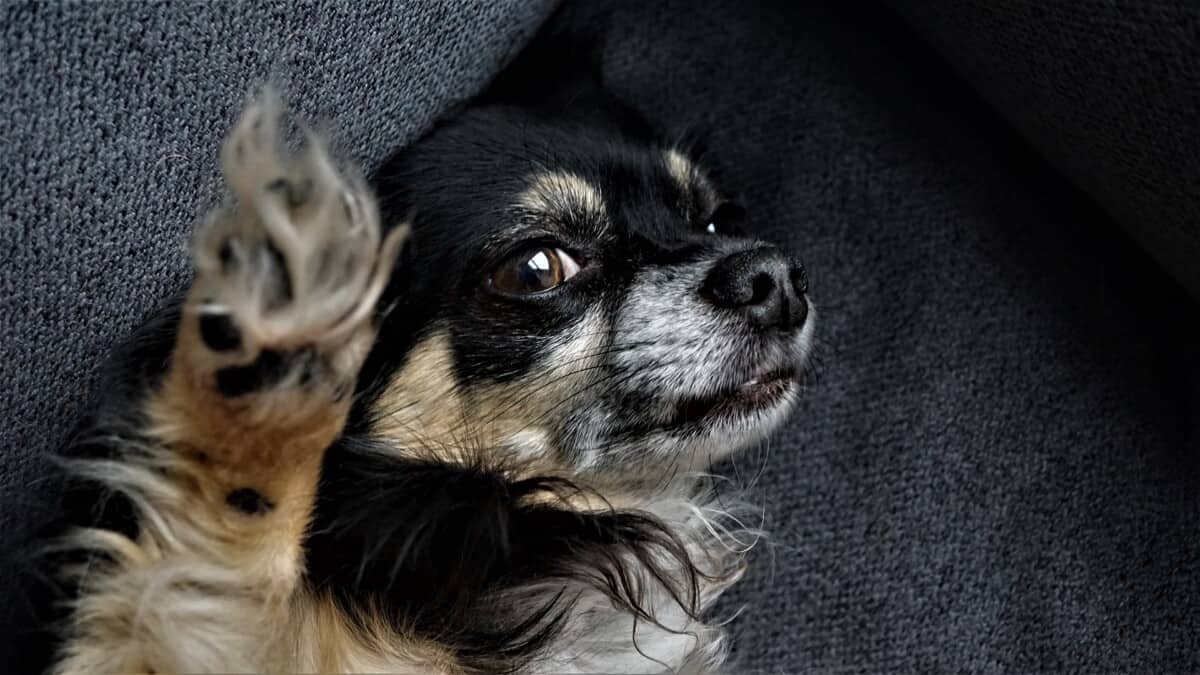During the heat cycle, female dogs undergo a series of hormonal changes that can affect their behavior, mood, and even their bodily functions. One question you may have is whether your dog’s poop changes during her heat cycle.
Dog poop can change during your female dog’s heat cycle due to hormonal fluctuations and physiological changes. You should monitor your pet’s fecal matter during this period, as alterations in appearance and consistency can provide valuable insights into your dog’s health.
The heat cycle, or estrus, is a critical phase in a female dog’s reproductive life. Your dog’s bodily changes can impact various aspects of her health, including her digestive system. As a dog owner, you should be aware of any potential changes in your dog’s fecal matter when your dog is in season.
In this article, we will explore the various factors that can influence the appearance and consistency of your dog’s poop during her heat cycle and discuss how you can effectively monitor and address any concerns you may have.

Understanding the Canine Heat Cycle
Understanding the canine heat cycle is crucial for dog owners and caretakers who aim to ensure the overall well-being of their pets.
Also known as the estrous cycle, this reproductive process occurs in female dogs and typically lasts 2 to 4 weeks. The heat cycle can be divided into four distinct stages:
- Proestrus: This stage lasts an average of 9 days, during which the female dog’s vulva swells, and a bloody discharge may be observed. The female dog attracts male dogs but is not yet receptive to mating.
- Estrus: Lasting between 3 to 21 days, the estrus stage is when the female dog becomes receptive to mating, and her discharge changes from bloody to a more straw-colored fluid. This is the fertile period when ovulation occurs.
- Diestrus: This stage typically lasts 6 to 10 weeks and signifies the end of the female dog’s receptivity to mating. Hormonal changes occur; if the dog is pregnant, this stage will last until the puppies are born. If not pregnant, the dog’s body will gradually return to its non-reproductive state.
- Anestrus: The final stage, anestrus, is a sexual inactivity that lasts 2 to 8 months before the next heat cycle begins. During this time, the female dog’s body recovers and prepares for the next cycle.
Hormonal Changes and Their Impact on Digestion
During the heat cycle, a female dog’s body undergoes significant hormonal changes that can directly affect the digestive system. The primary hormones involved in the heat cycle are estrogen, progesterone, and luteinizing hormone (LH).
Fluctuations in these hormone levels can impact various physiological processes, including digestion and nutrient absorption, leading to changes in the dog’s fecal matter.
Estrogen, for instance, is responsible for initiating the heat cycle and has been known to influence gastrointestinal motility. An increase in estrogen levels during proestrus and estrus can cause the smooth muscles in the gastrointestinal tract to relax, potentially leading to slower digestion and constipation.
On the other hand, a decrease in estrogen levels during diestrus can result in increased gastrointestinal motility, which may cause loose stools or diarrhea.
Progesterone, another critical hormone during the heat cycle, maintains pregnancy in dogs. It is known to have a relaxing effect on smooth muscles, including those in the gastrointestinal tract.
Elevated progesterone levels during diestrus can cause slowed gastrointestinal transit, which may lead to constipation or harder stools.
Stress and anxiety associated with the heat cycle can also impact a dog’s digestion. Stress can cause the release of cortisol, a hormone that affects various bodily functions, including digestion.
When a dog is stressed or anxious, it may experience digestive upsets, leading to changes in fecal matter.
“However, it’s essential to note that your dog’s stomach upset during her heat cycle may not be correlated to hormonal changes, and you should always seek your vet’s advice.”
World of Dogz
But if you notice that your dog suffers from nausea, appetite changes, and changes in her poop when in season, then there’s a good chance that the two are interrelated.

Common Changes in Dog Poop During Heat Cycles
During heat cycles, dog owners may observe several common changes in their pet’s fecal matter. These changes can be attributed to hormonal fluctuations, stress, and other physiological factors. A recent study also identified that metabolic changes occur during the heat cycle.
Here are some of the most common changes you may notice:
- Change in consistency: A dog’s poop may become harder and drier or softer and looser during the heat cycle. This can be due to estrogen and progesterone levels influencing gastrointestinal motility and stress-related factors affecting digestion.
- Color variations: The color of dog poop may change during the heat cycle, often becoming darker or lighter than usual. This can result from altered nutrient absorption or changes in the dog’s diet due to appetite fluctuations.
- Presence of mucus: Mucus may be present in the fecal matter during the heat cycle, particularly if the dog is experiencing stress or gastrointestinal irritation. Mucus production is a natural response to inflammation and can help protect the dog’s intestinal lining.
- Blood in the stool: Although uncommon, some dogs may exhibit blood in their poop during the heat cycle. This can be due to gastric irritation or, in rare cases, a more serious underlying health issue. You should consult your vet if blood is observed in the stool.
- Odor changes: Hormonal fluctuations and changes in the dog’s diet or nutrient absorption can lead to variations in the odor of the fecal matter during the heat cycle.
Evaluating Consistency and Color: What to Look For
Evaluating the consistency and color of your dog’s fecal matter during her heat cycle can help you identify potential health concerns and ensure your pet’s well-being.
Here are some guidelines on what to look for when assessing your dog’s poop:
Consistency
Healthy dog poop should be firm but not hard and easy to pick up without leaving residue behind. If the fecal matter is too soft, watery, or loose, it could indicate diarrhea or digestive upset. Conversely, if the stool is hard and dry, it may indicate constipation.
Color
The color of healthy dog poop can range from light to dark brown, depending on the dog’s diet and other factors. Unusual color variations should be monitored, as they may indicate changes in diet or nutrient absorption or potential health issues:
- Black or tarry stools: Could indicate the presence of digested blood in the feces, which may signify a bleeding issue in the upper gastrointestinal tract.
- Red streaks: Red streaks in the stool could be a sign of fresh blood, potentially resulting from lower gastrointestinal bleeding or rectal irritation.
- Yellow or grey stools: This may indicate issues with bile production or absorption, possibly pointing to liver or gallbladder problems.
Frequency
Monitor the frequency of your dog’s bowel movements, as changes in frequency can also provide clues about their health. A sudden increase or decrease in bowel movements may indicate digestive issues.

Addressing Nutritional Needs and Hydration
Addressing your dog’s nutritional needs and maintaining proper hydration to ensure optimal health and digestion is essential during the heat cycle. Here are some steps you can take to support your dog’s well-being during this period:
- Balanced diet: Providing a balanced and nutritious diet tailored to your dog’s specific needs is crucial. High-quality commercial dog food or a well-planned homemade diet approved by a pet nutritionist can help maintain regular digestion and support overall health.
- Consistency: Stick to a consistent feeding routine and avoid introducing new foods or treats during the heat cycle, as sudden dietary changes can cause digestive upsets.
- Appetite fluctuations: Be aware that your dog’s appetite may change during the heat cycle, and adjust portion sizes accordingly. If your dog eats less than usual, consider offering smaller, more frequent meals to encourage food intake.
- Hydration: Ensuring your dog has access to clean, fresh water at all times is crucial, especially during the heat cycle. Dehydration can exacerbate digestive issues and impact overall health. Monitor your dog’s water intake and encourage drinking by placing multiple water bowls around the house or using a pet water fountain.
- Supplements: Sometimes, your veterinarian may recommend specific supplements or probiotics to support your dog’s digestive health during the heat cycle.
- Exercise: Regular, gentle exercise can help maintain healthy digestion and reduce stress during the heat cycle. Adapt the intensity and duration of exercise to your dog’s energy levels and comfort.
By prioritizing your dog’s nutrition and hydration during the heat cycle, you can support their overall health and minimize potential changes in their fecal matter.
When to Consult a Veterinarian: Red Flags
While some changes in your dog’s fecal matter during the heat cycle can be considered normal, it is crucial to recognize red flags. Here are some signs that may indicate a more serious issue:
- Persistent diarrhea or constipation: If your dog has been experiencing ongoing diarrhea or constipation for more than a few days, seek veterinary advice.
- Blood in the stool: Blood in your dog’s fecal matter, whether fresh red streaks or a black, tarry appearance, should always be taken seriously. This could signify gastrointestinal bleeding, inflammation, or other health issues that need prompt evaluation and treatment.
- Vomiting: If your dog is vomiting in addition to experiencing changes in their fecal matter, it may indicate a more severe gastrointestinal issue or infection.
- Lethargy or weakness: If your dog appears weak, lethargic, or uninterested in their usual activities while experiencing changes in their poop, consult your vet. This could be a sign of an underlying health problem or a complication related to the heat cycle.
- Weight loss: Sudden or unexplained weight loss accompanied by changes in fecal matter can indicate health concerns.
- Dehydration: Signs of dehydration, such as sunken eyes, dry gums, or skin that does not return to its normal position when pinched, warrant immediate professional consultation, especially if your dog is experiencing digestive issues during the heat cycle.
- Unusual fecal odor: A persistent, foul odor in your dog’s fecal matter that is not associated with recent dietary changes may indicate an infection or other health issues that need to be addressed.

FAQs
Do Dogs Pee Differently When In Heat?
It’s not necessarily the act of peeing itself that’s different, but rather the frequency and behavior surrounding it. During a dog’s heat cycle, its increased hormone levels can increase scent-marking behavior.
This may lead to a dog peeing more frequently or in different locations than usual. Additionally, some female dogs may exhibit “flagging,” where they lift their tail to expose their vulva while peeing. This behavior allows the dog to spread its scent and signal to male dogs that they are in heat.
Can A Female Dog’s Heat Cycle Be Delayed Or Skipped?
A female dog’s heat cycle can be delayed or skipped, but this can be influenced by various factors such as age, health, and environment. Stress, illness, and changes in diet can also affect the timing of your dog’s season. Spaying your dog can also prevent future heat cycles.
Can Spaying My Female Dog Prevent Changes In Her Poop During Her Heat Cycle?
Spaying your dog can prevent changes in her poop during her heat cycle and provide several other health benefits. Spaying involves removing the dog’s ovaries and uterus, eliminating the hormonal changes during a heat cycle. This can prevent behaviors such as scent marking and flagging, leading to changes in a dog’s poop and other bodily functions.
Additionally, spaying can prevent future health issues such as uterine infections and certain types of cancer. It’s important to discuss the benefits and potential risks of spaying with your veterinarian to make an informed decision about your dog’s health.





